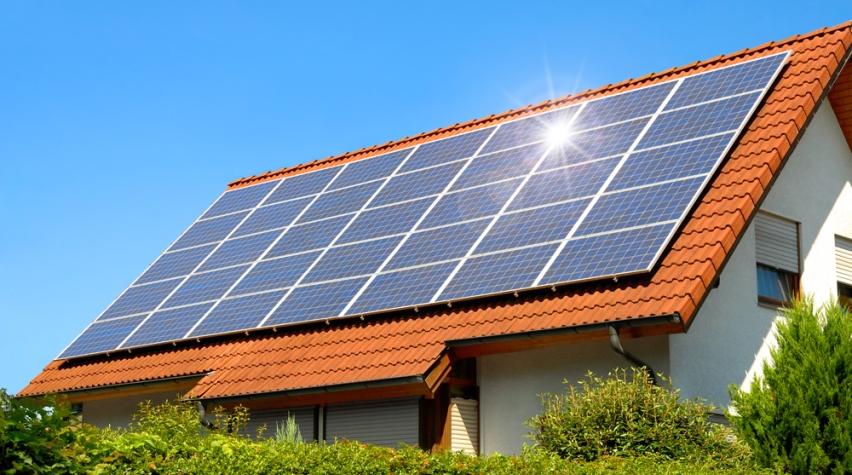
Reversing a dismal two-year profit slump triggered by a global glut, the solar industry is suddenly bracing for a whiplash shortage of solar panels.
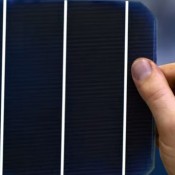
The solar panel glut crashed prices, dragging many manufacturers into bankruptcy. Even Suntech, China's and the world's largest solar manufacturer at the time, collapsed. It was a full blown solar-mageddon. Fortunately, this wrenching die-off also made solar power more competitive and, in a very price sensitive industry, drove up demand. Now, with solar panels selling for 76 cents a watt, compared with $2.01 at the end of 2010 (the price slipped 12 percent more this year alone), installations are expected to jump 29 percent by the end of this year.
Nobody's predicting disaster
Since 2006, the upstart industry's transformation has been tremendous. Total solar panel shipments may increase to 52 gigawatts this year, and 61 gigawatts next year. Which is part of the the problem, because many analysts estimate that current capacity is "about" 59 gigawatts, excluding obsolete production lines. Looking at only "factories that are meaningful and active," supply and demand is in sync, Luc Grare, senior VP at Norwegian panel-maker REC Solar ASA, told Bloomberg.
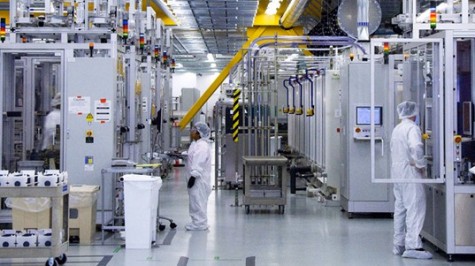
So although nobody's predicting disaster, that tenuous balance may not last very long. As part of a larger trend, renewable energy installations should rise 37 percent over the next two years, driven by relentless solar and wind cost declines, Michael Liebreich, founder of Bloomberg New Energy Finance, keynoted to a packed New York conference in April. "What we're seeing is clean energy competitive with what I call alternative energy - fossil fuel energy," Liebreich snarked to the A-ticket audience of nodding energy and utility executives.
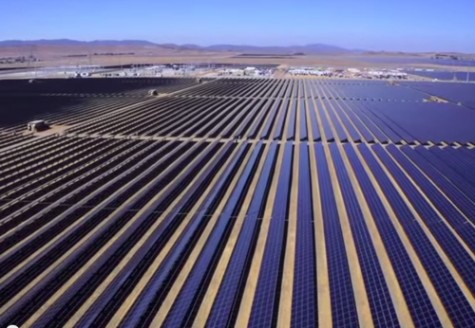
One of the most famous investors in the world
That may sound like bubble-talk, but several investment banks piled on. Global investment bank UBS said solar is likely to account for 10 percent of global electricity capacity by 2020. Just two months before, Citigroup hailed the "age of renewables" in the US, saying that solar and wind energy are becoming more competitive with traditional energy sources. The bank explained that since the US power industry focuses on a matrix of low-cost fuel diversity and stable cash flows, they're inevitably drawn to the emerging economies of solar and wind. For a utility, a stable twenty year wind or solar power purchase agreement (PPA) is like winning a golden ticket to Willy Wonka's chocolate factory. Since investment banks could also be cheerleading, it's easier to trust one of the most famous investors in the world. You may not know it, but Warren Buffett has acquired 4.8 gigawatts of wind, and 1.3 gigawatts of solar from US companies SunPower and First Solar. He also owns geothermal near California's Salton Sea, but that was just an impulse buy.
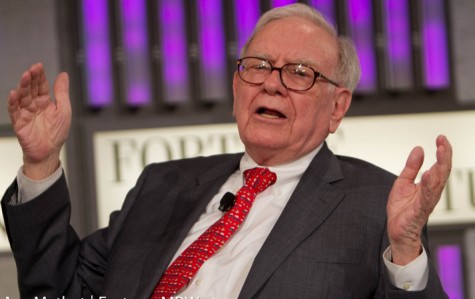
When Buffett described Berkshire Hathaway Energy's increasing renewable energy investments at a convention in June, Fuelfix reported that he had to ask a deputy to remind him how much the company had already invested: just north of $15 billion. Unfazed by those astronomical numbers, Buffett congenially added, "There's another $15 billion ready to go, as far as I'm concerned."
A looming shortage
Many manufacturers are already expanding. In May, Canadian Solar began construction on a new cell factory in China, a joint venture with GCL-Poly Energy Holdings that will initially have 300 megawatts of annual capacity. "The solar industry is near a turning point," Canadian Solar CEO Shawn Qu told Bloomberg. He's expanding now because he's a long-standing boom and bust veteran and he's already preparing for the coming shortage. "Every industry goes through cycles," Qu said. "It's inevitable." With SunPower's factories running full speed, the Buffet favorite is the second-largest solar panel maker in the US and has already felt the boom's uplift, expecting sales of 1.2 gigawatts to 1.3 gigawatts this year. Even though its new Philippine fab will begin cranking out 350MW of panels in 2015, SunPower is already planning another, larger 700MW fab, CEO Tom Werner told Bloomberg.
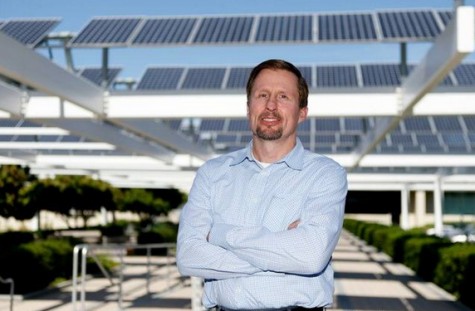
"This is the market telling us they want more product," said Werner, who spends a lot time video chatting with far-flung executives, prodding them to coax more output from maxed-out factories. What's the motivation behind the feverish build-outs? When panels become scarce, they'll be routed to the biggest customers, Angelo Zino, an analyst in New York at S&P Capital IQ, told Bloomberg. "The large-scale utility projects are where the modules are going," Zino said. "If there's any tightness in the supply chain, you'd think that the push-outs would be residential." SolarCity, the fastest growing US residential solar installer, had been ruminating about that exact threat to its business.
Averting a squeeze at Solar City
Expecting supply problems to hamper the country-wide surge for their roof-top systems, SolarCity went vertical, joining the other major US solar companies, and bought its own panel-maker in June. Just three months ago, SolarCity announced it would buy Silevo, a startup producing solar cells with higher efficiency and lower costs than existing modules, according to Peter Rive, co-founder at SolarCity, who favorably compared Silevo's current 18.5 percent efficiency and scaled-up 24 percent efficiency with the paltry 14.5 percent efficiency of today's mostly Chinese multi silicon cells. SolarCity is so concerned that it plans to begin work immediately on a New York factory that can produce 1-GW of power within two years. "At some point, it will be a 400-gigawatt-a-year market - it's just mathematical," said Rive in a press conference. Elon Musk, SolarCity's chairman, said, "If we don't do this, we thought there was risk of not being able to have the solar panels we need. The market is infinite for the next 30 or 40 years."
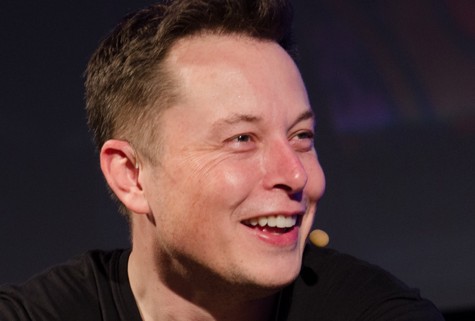
The New York 1-GW cell and panel fab may feel like over-reach, but SolarCity executives said it's "just the start" of even bigger plans. "The gigawatt plant will almost be a pilot," said Musk with a gambler's bravado, who added that 10 gigawatts could be in the works.
Big customers in developing countries
Developing countries are even more likely to see high growth in power demand over the next 16 years. For example, India will see a rise of just under 200% over 2012-30 thanks to population growth, changes in energy consumption and use of more electricity-hungry appliances. There's also a big wild card: adding a huge population currently with no access to the grid at all. China could be ground zero for the coming shortage (a majority of new panels staying in the country), buoyed by its ongoing economic expansion boosting power demand 115 percent over the same period. As an example, Trina Solar, China's second-largest solar-panel maker, has begun building a power plant with 1 gigawatt of capacity, about the same as a new nuclear reactor, in the western Xinjiang region of China. It's also building a factory in the area to supply parts. The project will be built in phases over four years, and the first two phases, totaling 300 megawatts, should be connected to the grid by the end of next year. "The solar plants will improve reliability of electricity supply to the surrounding regions," CEO Gao Jifan said in the statement. India's also got big plans for solar. New Prime Minister Modi just made a global media splash announcing that a series of "ultra mega" solar PV farms will be built, while dramatically extending a plan he'd began in Gujarat to cover agricultural canals with solar panels.
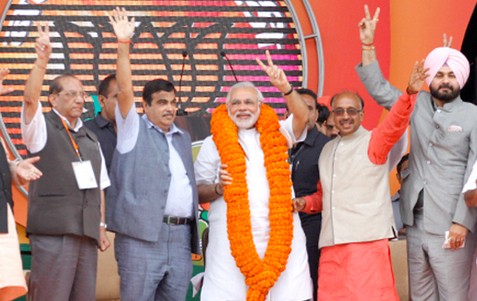
Along for the wild ride, First Solar was largest module supplier for the Indian market, but now, by combining manufacturing with project development, construction, operations and maintenance, the Arizona-based US company will develop its first project, a 45 MW-AC solar power plant at two sites in the Indian state of Telangana. Construction will begin by October 2014, with operation starting eight months later in May 2015. Raj Prabhu, CEO of an Indian clean energy consulting firm told PV Magazine, "For one of the largest solar companies in the world to develop in India says it's an important future market and they don't want to miss that opportunity." The power purchase agreement is also note-worthy. The project will sell power at US$.106 per kWh for 20 years, which previously had been considered too low to be viable.


